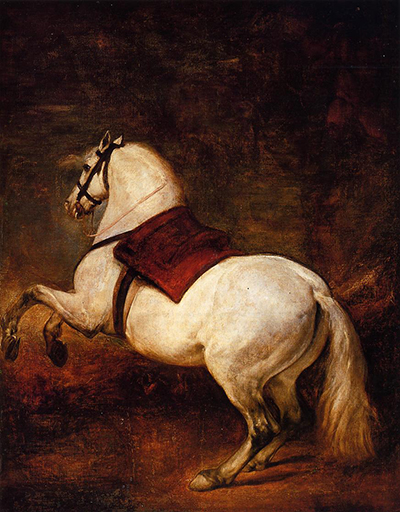A White Horse is a beautiful horse portrait by famous Spanish artist, Diego Velazquez
It is rare for this artist to allow the equestrian creature to become the sole focus of attention, when normally they would be used as a supporting character to a key military or royal figure.
The removal of any accompaniments to the horse allows Diego Velazquez to display his well honed anatomical skills, developed over years of technical practice and study. There is also the opportunity to include light effects on the horse’s limbs and hair.
For this painting Velazquez may well have experimented with different poses for the animal, as well as the angle from which he placed himself and the viewer. This side view from closer to the back brought the tail into the composition and also draws in the horse’s powerful back legs.
George Stubbs, a Liverpool-based British painter is considered by many to have been the finest artist for capturing the grace and beauty of the horse, though there were other significant exponents such as Edgar Degas who preferred racing scenes from Long-champs.
Velazquez left behind one remaining study sketch that displays his horse studies, though others may still remain unattributed. For both his human and animal paintings the artist would adjust pose several times before commencing on the full oil on canvas.
The artist would use white horses again in Equestrian Portrait of Elisabeth of France whilst he chose brown horses in Philip IV on Horseback and Equestrian Portrait of the Count Duke of Olivares. Perhaps his reason to change colour was due to the gender of each subject, with a white horse more suited to an elegant, beautiful woman.
This particular painting was completed in 1635, at a time when the artist was well established and has established a certain amount of autonomy over which commissions he picked up and the artistic license that he enjoyed for the majority of them.
There were also dogs in his work, too, normally capturing close bonds between animals and their owners. Some comparisons could be drawn with another British artist in this sense, namely Sir Edwin Henry Landseer who was a respected Victorian painter several centuries later.




